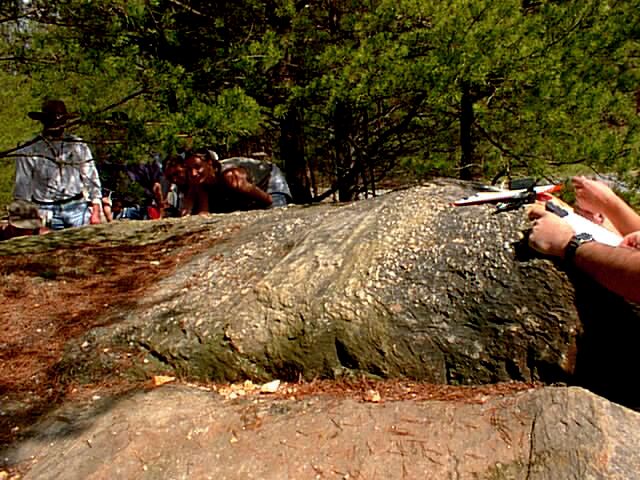Day 1, Stop 1 Semiprimitive Campsite |
The meter-high outcrop at the semiprimitive campsite contains two different bedding planes, both oriented N22W/11NE. The top bed consists of a very coarse-grained, highly lithified metamorphosed sandstone with conglomeratic clasts towards the top, approximately 80 cm thick. The bottom bed is a medium-to-coarse-grained sandstone, and is less indurated than the top bed. The top bedding plane contains elongated, foliated pebbles, composed primarily of quartz. Foliation is a preferred orientation of crystal planes in mineral grains. These pebbles are oriented perpendicularly to the direction of maximum shortening (N12E/31SE) of an overturned fold. The foliation of the minerals dips more than the bedding plane, in the same direction, indicating that the outcrop is part of the upper limb of a fold. The orientation of the fold is consistent with the regional Paleozoic stress directions, demonstrated by the elongation of the pebbles in the outcrop.
|
|
Evidence of a steep
fault on the north side of the outcrop was left
by chattermarks. Chattermarks are minerals
deposited between fault blocks as they move.
Faults leave other indicators on fault surfaces,
such as striae (scratched lines) and fault gouge
(ground-up powdered rock formed when two rocks
slide past each other). |
